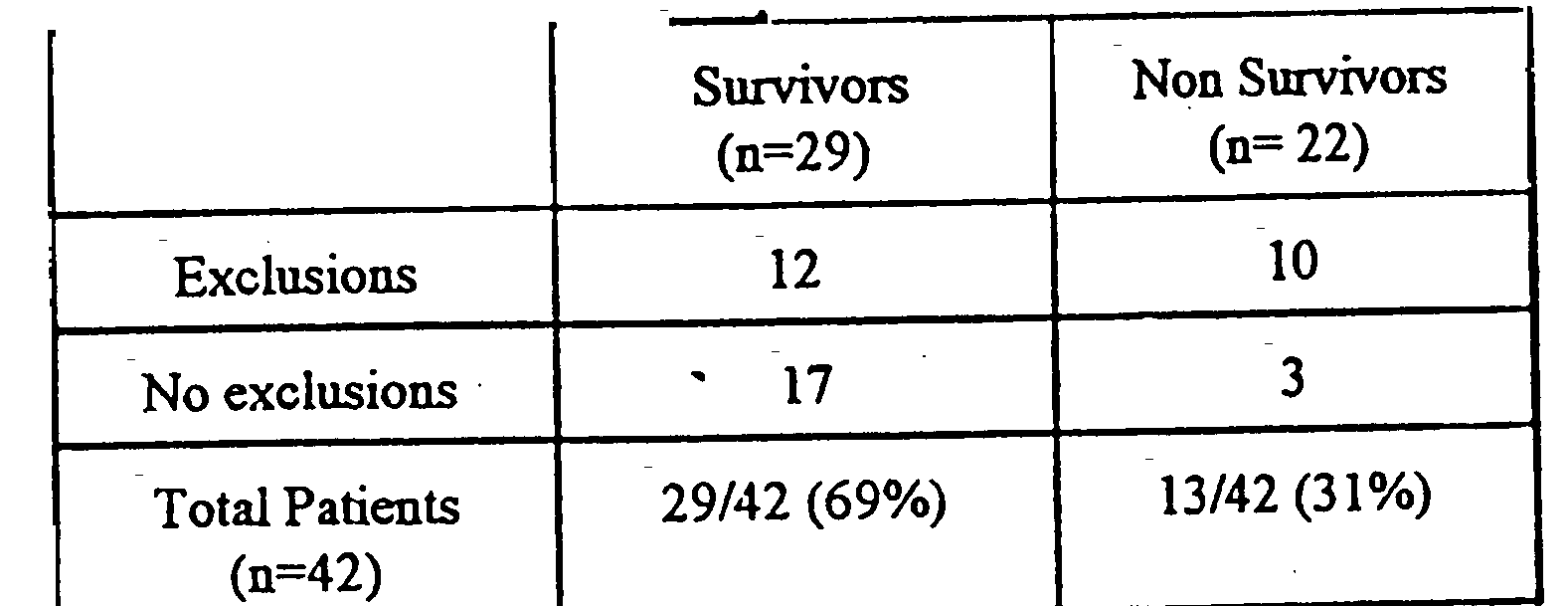
| 11 th Annual Pediatric Critical Care Colloquium |
| Session/Time | Pulmonary II/Thu, 2:00 - 4: 00 PM |
| Title | Survival in Pediatric Respiratory Failure: Is It Really Improving? H |
| Author | Dalton, K Weise, K Davis, S Johnston |
| Affiliation | Divisions of Pediatric Critical Care Medicine, Georgetown University Medical Center, Medical College of Virginia, University of Virginia at Charlottesville, Children's Hospital ofthe Kings Daughters and the Mid-Atlantic Pediatric Critical Care Network, WA |
| Introduction | The largest evaluation of pediatric patients with acute respiratory failure (ARF) from 199 1, defined as FiO2 >50% and PEEP> 6 cm H20 for > 12 hows, found overall mortality of 43%.' Recently, there is some evidence that survival in ARF is improving. We pmspecti ,very collected data on non-consecutive patients meeting respiratory failure criteria of FiO2 > 50% and PEEP >6 cm H2O for > 12 hrs. to establish survival characteristics of these patients |
| Method | Data we= collected from 4 pediatric ICU's in the Nfid- Atlantic region. Demographic, diagnostic and outcome data was collected on standardized datashects- Data were entered into Ex I spreadsheet for evaluation. From the period 1996-1998, data on 42 pts. waIs collected. Patients were analyzed based on underlym. g diagnosis, presence or absence of exclusionary diagnoses and outwine. Exclusionary diagnoses included: BPD, head injury, genetic defect, congenital heart disease. Patients were managed via an algothrimic approach that limited PIP to 35-40 cm H20, used pressure control ventilation, permissive hypercapnia when needed and allowed use of other techniques such as surfactant, high frequency ventilation, inhaled nitric oxide and ECMO |
| Result | In addition to
conventional mechanical ventilation, I pt. received ECMO, 6 pts. received suffactant, 7
received inhaled nitric oxide, 7 received high frequency ventilation and 5 ptS. Were
treated with permissive hypercapnia. Pts. with no exclusionary diagnoses had 85% survival
versus 55% in pts. Pts with exclusionary diagnoses (Chi square anah.sis, p=.008, degrees
of freedom 1).
|
| Conclusion | : As compared to similar levels of ventilatory requirements for respiratory failure in patients from 199 1, survival in pediatric respiratory failure is improving However. in pts. with underlying immune deficiencies, BPD, congenital heart disease, head iury with cerebra linjury mortality remains high,despite the use of alternative techniques such as high frequency ventilation, surfactant and inhaled aitric oxid-e. Further research to validate these fuidiags is required to establish prognostic iafomiation for patients and families and to guide appropriate use of alternative therapies. The development of outcome scores 'ui survivors is also imperative. |
Use your browser's back button to return to the appropriate index of abstracts...
Back to PCCC 98 Abstract Introduction | Back to PCCC 1998